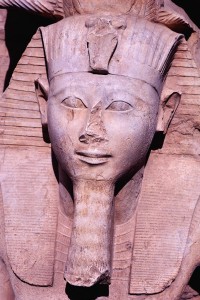The Ancients and Urinary Stones

Urinary stones have afflicted humans since the dawn of history. The first known stones were discovered in Egyptian mummies. In 1901, the English Archeologist E. Smith found a bladder stone from a 4500-5000 year old mummy in El Amrah, Egypt. Treatments for stones were mentioned in ancient Egyptian medical writings from 1500 B.C.
Surgery to treat stones was first described in the 8th century B.C. by an ancient Indian surgeon named Sushruta. He provided detailed information on urinary stones, urinary anatomy, and surgery for stones in his writings, compiled as the Sushruta Samhita.
Hippocrates
In the 4th century B.C., Hippocrates specifically mentioned stones in his Hipprocratic Oath, which is historically taken by newly trained physicians.
In the oath, this is the line that refers to stones: “I will not use the knife, not even on sufferers from stone, but will withdraw in favor of such men as are engaged in this work.”
Most historians feel that this statement was a warning that physicians should refrain from participating in surgery, which was considered dangerous. At that time, and for many subsequent centuries, surgery was instead performed by barber/surgeons who were not considered physicians.
Urinary Stones in the Middle Ages

In the middle ages, surgeons called “lithotomists” traveled around Europe with their special tables called “lithotomy tables” on which they placed patients to cut out stones. We still use the term “lithotomy position” in the operating room today to refer to placing a patient in a position similar to a woman in childbirth. The patients these lithotomists treated were typically men with bladder stones from enlarged prostates rather than actual kidney stones. The bladder stones led to recurrent infections, caused pain, and made it difficult for men to urinate.
Surgery in the middle ages occurred well before the invention of anesthesia or antibiotics and many men chose instead to not undergo treatment for their stones. The number of patients who died from their lithotomy surgery was frighteningly high and lithotomists were known to leave town quickly if things went bad. The surgeries were so fraught with danger and pain that Jan de Doot, a Dutch blacksmith, was said to have performed a surgery on himself to remove a bladder stone. A painting from 1655 by Carel de Savoyen depicts Doot, holding his knife and bladder stone. His approach was to make an incision below the scrotum directly into the bladder, find the stone, and extract it. He had his brother help him in the surgery by holding the scrotum aside. de Doot apparently had already experienced two of these surgeries by lithotomists before performing his third “diy” surgery. It is from them that he likely learned the technique.
Modern Urinary Stone Surgery
Modern stone surgery was developed in the last half century. In 1976, the first percutaneous stone surgery was performed by Fernstrom and Johansson.
ESWL (shockwave lithotripsy) was developed out of early research on the effect of shockwaves on aircraft parts by the German company Dornier. This was further developed for the treatment of stones in the first human procedure occurring in 1980. The Dornier HM-3 (which stood for human model-3) required the use of a water bath and an elaborate overhead gurney to position patients. Nowadays, ESWL machines instead use fluid filled “balloons” and gel placed against the patient’s body to allow transmission of shockwaves for treatment.
Ureteroscopy, or the placement of a lens into the ureter was first described in 1912 by Hugh Hampton Young but the first ureteroscopic stone surgery did not occur until 1981.
Hi there, I want to subscribe for this webpage to get hottest updates, so where can i do it please help.
An intriguing discussion is worth comment. I think that you
ought to publish more about this subject matter, it might not be a taboo subject but typically people do not talk about these topics.
To the next! Many thanks!!
I got kedney stones. I get pain alot and my doctor dont give me pain pills
Kidney**
hi friends, if you are suffering from kidney stones, don’t waste your money and time we will cure just in 10 days without surgery only @ 200 INR no hidden charges.
Have your Doctor refer you to a Urologist – In the mean time start drinking 64 ounces of water per day
I am kidney stoner boy ,feeling very week and pain urine is also burnig and right sparomatozoiate big and hard.
Weak**